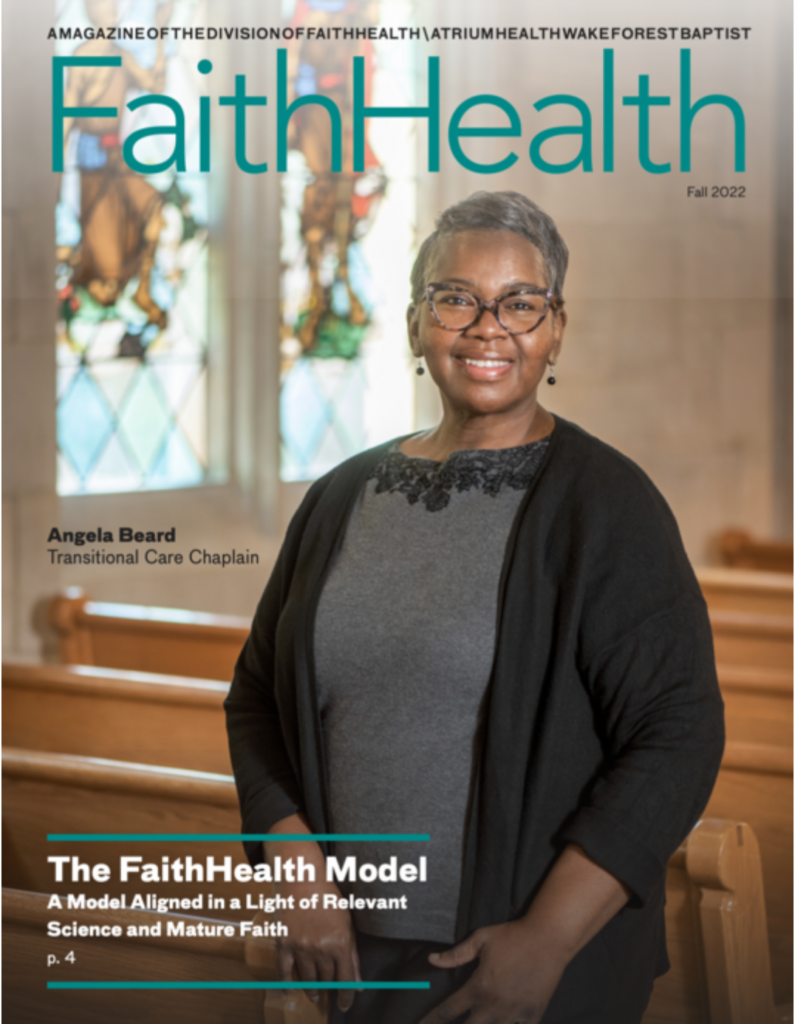Community isn’t brain science — it’s harder
A chat with brain scientist Paul Laurienti, MD, PhD
Interview by Les Gura
When he was 14 years old, Paul Laurienti was in a construction accident while helping his father, a small contractor, build a home in Denver. A scaffold he was standing on collapsed, pinning his head between a stack of 800 pounds of wood and a windowsill. Laurienti suffered a fractured skull, broken jaw and other injuries, but recovered. Thus began a fascination with the human brain.
Today, Laurienti, professor of Radiology at Wake Forest School of Medicine since 1999, is working with FaithHealthNC to analyze patient data to understand more about diseases and co-morbidities in specific Census tracts.
How did your research on the human brain and changes with aging morph into the study of complex systems and network science?
Network science really hadn’t started until 1998, 1999. I didn’t know anything about the study of how things connected. My colleague Jonathan Burdette, MD, went to a seminar by a famous cardiologist from Harvard Medical School, Ary Goldberger, MD, who studies the heart as a complex system. He was blown away. We thought, ‘The brain’s a giant network of connections. This is obvious. Why aren’t we using this?’
And health care is a complex system?
Our bodies are networks. When a disease affects the liver, the changes in our blood chemistry can change the function of virtually every other organ system. This is particularly true for chronic, or systemic, dieseases where all the organ systems can be involved.
Hospitals try to improve operations based on adjustments to average costs. Why doesn’t that make sense?
In complex systems, averages can be very misleading, if not downright wrong. When things interact, the system produces outliers. The outliers are very large and make averages meaningless. Think about a best-selling book. A book does not become a best seller by people just randomly buying it. What happens is that people read the book and tell others to read it. They write blogs about it. The book is featured by Oprah. All these events require that people interact, and what happens is that you get a book that vastly outsells all the other books on the best-sellers list.This is an outlier.
In a health care system, an outlier is a patent that ends up costing much, much more than the other patients. If you want to reduce costs in a health care system, you have to know about the outliers. If you focus on the average, you are forced to try to change the care and reduce costs for all patients.
That is a formidable task. You can make significant cost reductions just by focusing on the top 1 percent of all patients — the outliers. Not only does focusing on the outliers make the challenge much more manageable, it is the scientifically correct thing to do. The outliers should be the targets when you are trying to make change in a complex system, as they have the greatest impact on the system.
What are you working on now for FaithHealthNC?
The FaithHealthNC leaders believe some of our patients have specific needs. Of course they didn’t know for sure; they sensed there were socioeconomic problems because these patients aren’t healthy. We took patient data from [Wake Forest Baptist Medical Center], and we analyzed specific Census tracts to understand the common diseases, the demand for charity care and the disease relationships in those tracts. We also compared disease networks across different Census tracts. And we’ve mapped diseases geographically into what look like weather maps showing ‘hot spots’ of mostly high-frequency diseases. Pneumonia occurs in pockets, for example.
Why and how could this type of information be used to improve care?
We need to understand which diseases we should be thinking about and which patients we should be targeting, getting into the community where people need help and bringing the right resources. A lot of people out there have the same diseases, but some are incredibly unhealthy. How can we find them? If the inpatient data shows they look like this and cost so much, we need to get to them earlier and provide preventive care so they never have to come to the hospital. This is getting to people before

